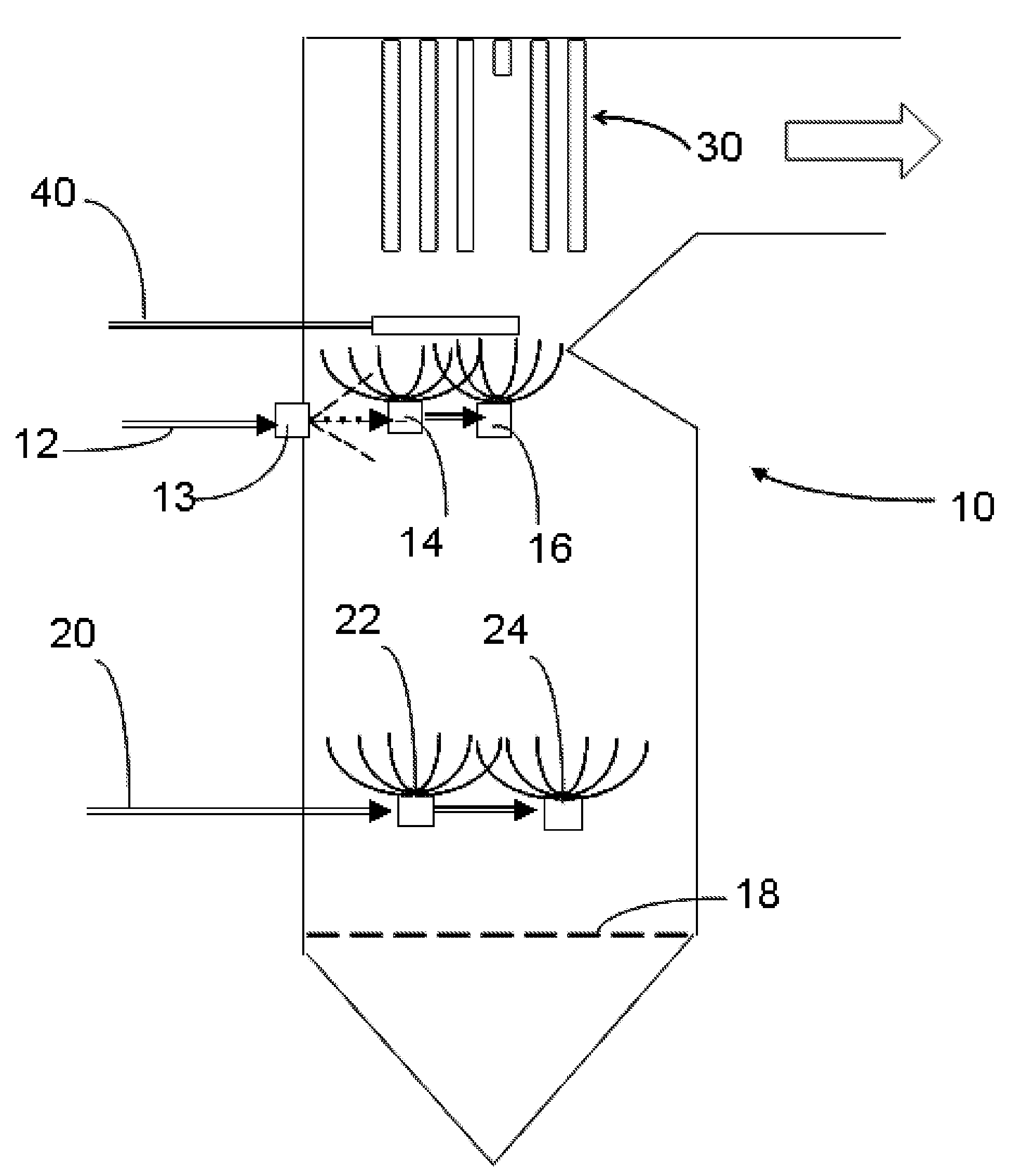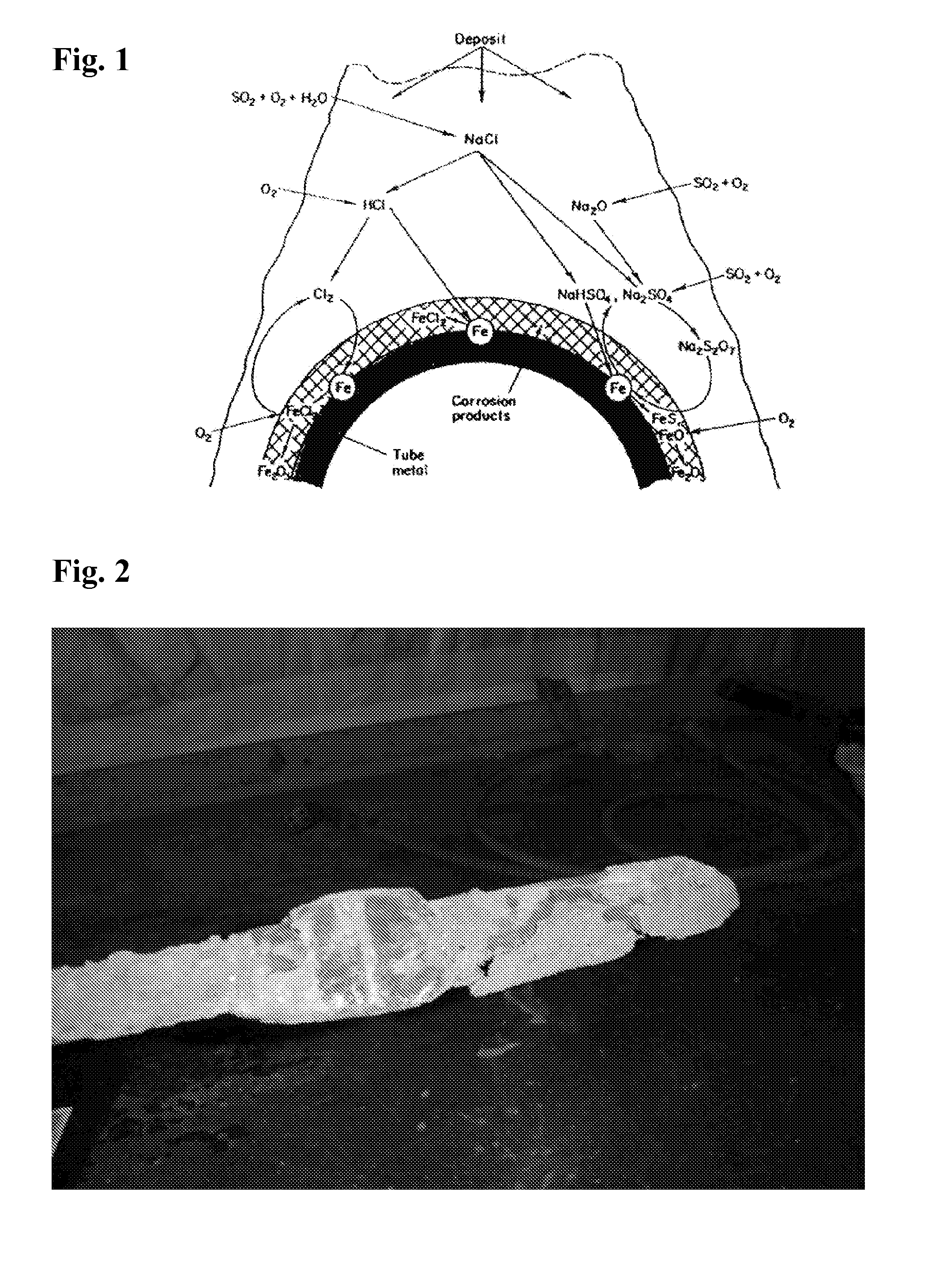Process for slag and corrosion control in boilers
a technology of slag and corrosion control, which is applied in the direction of furnaces, furnace types, and the nature of treatment water, etc., can solve the problems of wte boilers with super heater tubes that are particularly susceptible to slagging and corrosion, and place economic pressure on landfill availability and costs, and the economics of wte plants are complex
- Summary
- Abstract
- Description
- Claims
- Application Information
AI Technical Summary
Benefits of technology
Problems solved by technology
Method used
Image
Examples
example 1
[0056] In a baseline run, magnesium hydroxide [Mg(OH)2] was fed on one level at 1 pound per ton of fuel (RDF) at a WTE plant.
[0057] In a series of test runs, sulfuric acid (93% by weight) and sodium bisulfite (SBS) were fed at another level at 4.4 lbs (42%, by weight, solution in water) per ton of RDF fuel while also feeding the magnesium hydroxide as in the baseline run. One sulfuric acid and two SBS runs were made.
[0058] The data permits the following observations: [0059] 1. The corrosion rate reduction was 60% which is very similar to the first SBS run (61%) and the H2SO4 run. (60%) This is a good correlation. [0060] 2. Both SBS runs created a slag that was so friable that it literally crumbles when touched. [0061] 3. After the first SBS run, the WTE boiler operator performed a scheduled outage and inspection. It was noted that the clean up time was fast and the deposits from slag were very friable. [0062] 4. During the second SBS run (repeatability phase) a piece of slag fell ...
example 2
[0071] In a baseline run, magnesium hydroxide [Mg(OH)2] was fed on one level at 1 pound per ton of fuel (RDF) at a WTE plant. In a test run, sodium bisulfite (SBS) was fed at another level at 4.4 pounds (42%, by weight, solution in water) per ton of RDF fuel while also feeding the magnesium hydroxide as in the baseline run.
[0072] It was observed that slag deposits removed from a test probe in the boiler were extremely friable.
PUM
| Property | Measurement | Unit |
|---|---|---|
| compressive yield strength | aaaaa | aaaaa |
| compressive yield strength | aaaaa | aaaaa |
| temperatures | aaaaa | aaaaa |
Abstract
Description
Claims
Application Information
 Login to View More
Login to View More - R&D
- Intellectual Property
- Life Sciences
- Materials
- Tech Scout
- Unparalleled Data Quality
- Higher Quality Content
- 60% Fewer Hallucinations
Browse by: Latest US Patents, China's latest patents, Technical Efficacy Thesaurus, Application Domain, Technology Topic, Popular Technical Reports.
© 2025 PatSnap. All rights reserved.Legal|Privacy policy|Modern Slavery Act Transparency Statement|Sitemap|About US| Contact US: help@patsnap.com



